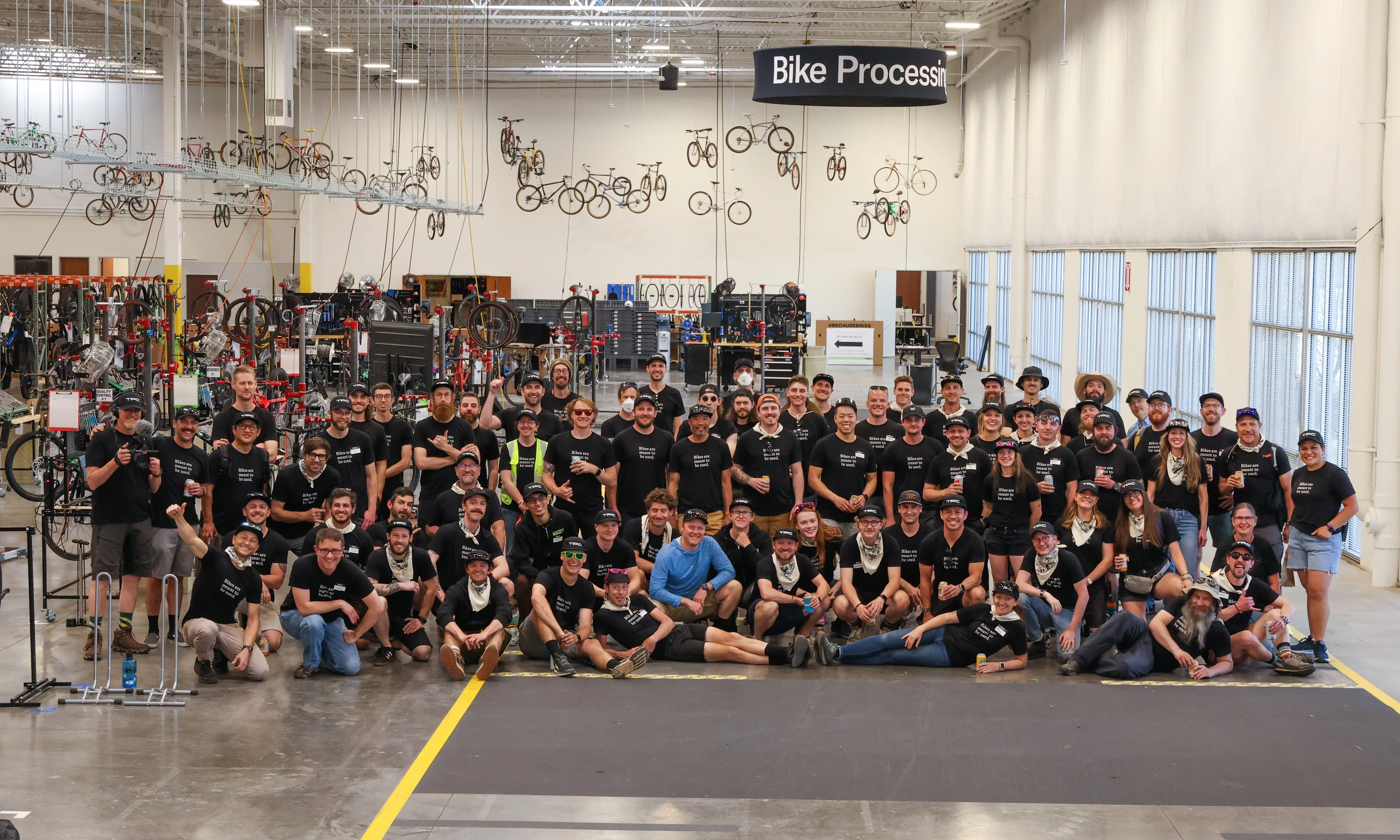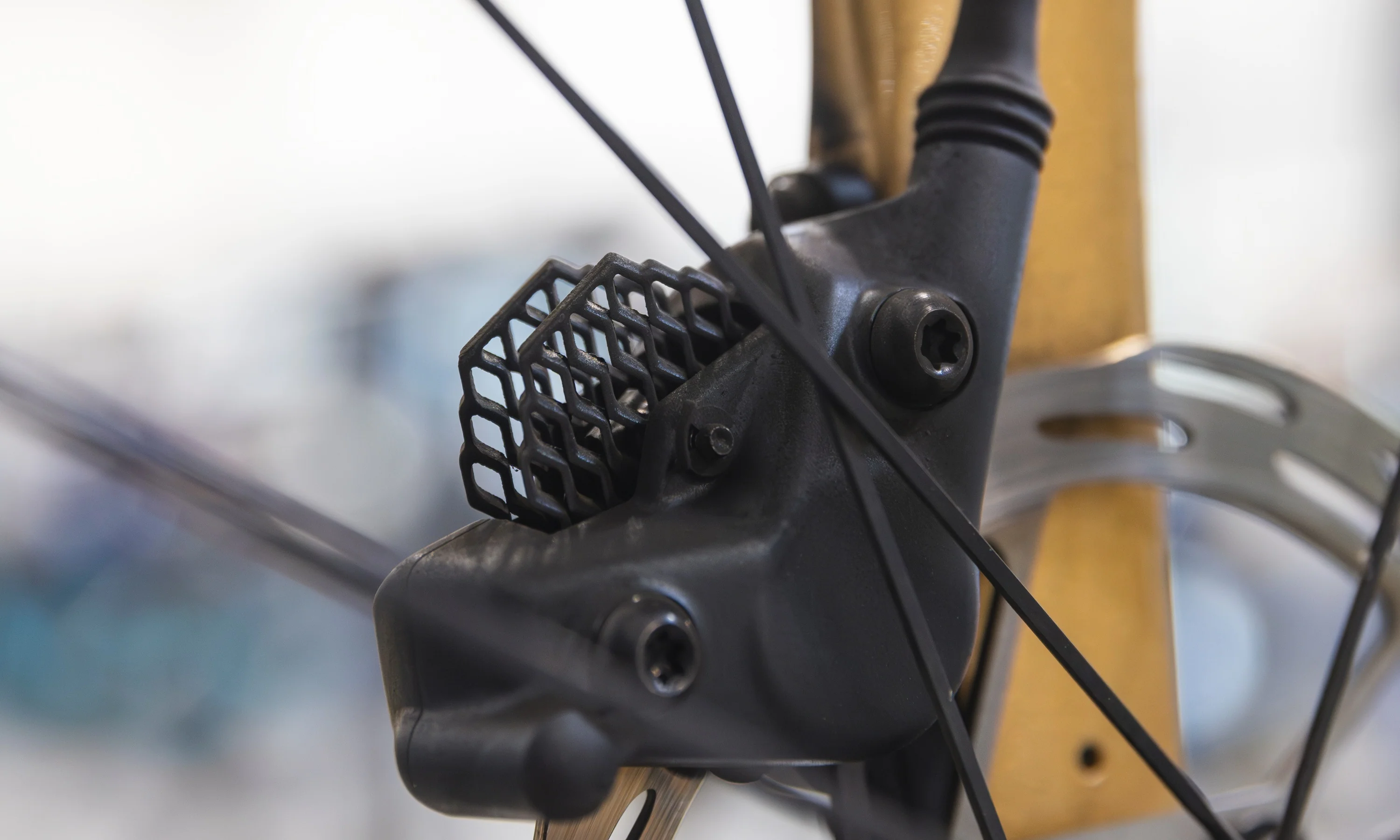SRAM is one of the biggest drivetrain and component manufacturers in the world, and many modern bikes come equipped with SRAM groupset. The particular groupset a bike has installed will affect its value and if you don’t have the full SRAM hierarchy committed to memory, it can get a bit confusing!
Our Ride Guides are always more than happy to explain the differences between different groupsets (contact them via phone, email, or chat!), but we decided to make a post breaking down the full SRAM groupset hierarchy that you can reference if you're trying to understand why some bikes cost more than others.
[button]Shop SRAM[/button]
SRAM Road & Gravel Groupset Hierarchy

- RED is the flagship groupset used by professional road and gravel racers
- Force is ideal for performance-oriented enthusiasts
- Rival is ideal for budget-oriented enthusiasts
- Apex is 1x only and most common on entry-level gravel bikes
Other Details
- Most SRAM road and gravel groupsets are “AXS” groupsets which are electronic and wireless
- SRAM's only mechanical option is its entry-level Apex 1x groupset
- 1x groups add “XPLR” to the model name: RED XPLR AXS, Force XPLR AXS, Rival XPLR AXS, Apex XPLR AXS
- RED AXS received a major update in 2024 with new shifters and brakes
- RED XPLR AXS received a major update in 2024 to 13-speeds with new shifters and brakes, a “Full Mount” rear derailleur, and a different cassette
[button]Learn More: Electronic vs. Mechanical Shifting[/button]
[button]Learn More: RED AXS[/button]
[button]Learn More: Force AXS[/button]
[button]Learn More: Rival AXS[/button]
[button]Learn More: RED XPLR AXS[/button]
SRAM Mountain Bike Groupset Hierarchy

- SRAM MTB groupsets can be split into three families: Eagle Transmission, Eagle AXS, and Eagle Mechanical
Eagle Transmission Hierarchy
- XX & XX SL Transmission are the flagship groupsets used by professional mountain bikers
- XX SL is the lightest option intended for cross-country racing
- X0 Transmission is ideal for performance-oriented enthusiasts
- GX transmission is ideal for budget-oriented enthusiasts
- S1000 Transmission is OEM only and will be found on entry-level bikes
Eagle AXS & Eagle Mechanical Hierarchy
- XX1 Eagle is the former flagship groupset used by professional mountain bikers
- X01 Eagle is ideal for performance-oriented enthusiasts
- GX Eagle is ideal for budget-oriented enthusiasts
- NX Eagle and SX Eagle are most common on entry-level bikes
Other Details
- All current SRAM MTB groupsets are 1x12-speed
- Eagle Transmission and Eagle AXS groups are wireless and electronic
- Transmission groups are distinguished by a “Full Mount” rear derailleur which requires a UDH frame. Full Mount rear derailleurs replace the derailleur hanger and mount directly to the frame to improve stiffness, durability, and shifting precision.
- Transmission groups require a compatible 10-52t Transmission cassette
- Eagle AXS and Eagle Mechanical can be installed on any standard mountain bike frame (Transmission requires a UDH frame)
- Eagle cassettes: 10-50t, 10-52t, 11-50t (SX & NX)
[button]Learn More: SRAM Transmission[/button]
[button]Learn More: XX vs. X0 vs. GX Transmission[/button]
[button]Learn More: XX1 vs. X01 vs. GX Eagle[/button]
[newsletter]
What Does a More Expensive Groupset Get You?
- The main benefit of a more expensive higher-end groupset is lower weight and more features
- Otherwise, most of the differences are in appearance, ergonomics, resale value (higher-end groups tend to hold value better), and prestige
- Most experienced riders, enthusiasts, and amateur racers don't need anything nicer than SRAM's mid-range offerings —e.g., Force, Rival, or GX
Road and Gravel Groupsets
RED weighs about 350 grams less than a Force and about 500 grams less than Rival.
In terms of shifting performance, all SRAM AXS road and gravel groupsets are about equal because the derailleurs all use the same motors and batteries. The current SRAM RED front derailleur shift is a bit more refined than the Force and Rival front derailleur shift because of a redesigned cage shape, but it’s not a huge difference.
The main reason SRAM RED costs so much more than its siblings is because it uses more lightweight materials — mainly carbon fiber — in its construction. The components also undergo more extensive machining or have more complicated construction to reduce weight as much as possible. This all adds to the cost.
RED uses carbon fiber for the brake levers, crank arms, and derailleur cage. Rival, on the other hand, uses aluminum for all of these components, which is cheaper. RED uses more expensive machined one-piece chainrings while Rival uses forged two-piece chainrings. RED also uses ceramic bearings rather than more affordable steel bearings. Force is somewhere in between. It has carbon brake levers, carbon crank arms, and machined chainrings, but it doesn’t go as extreme as RED with weight reduction to save on costs.
Higher-end groupsets also tend to use more of the latest features. RED, for example, uses the latest SRAM shifter and brake design. This provides more hand comfort, more braking power, and there are built-in satellite shifters on top of the hoods. In a few years, these features will likely trickle down to the Force and Rival groups, but if you want them now, you’ll have to pay a premium for a RED groupset.
Mountain Bike Groupsets
The same basic principles apply when comparing MTB groupsets — higher-end groups are lighter than mid-range and entry-level groups because they use more expensive materials and have more refined construction. XX is lighter than X0 which is lighter than GX. Higher-end groupsets also pack in the most features. For example, XX SL and XX Transmission use a “Magic Pulley” wheel in the rear derailleur to protect the derailleur from trail debris while X0 and GX do not.
There is some added complication because SRAM offers so many versions of its MTB groupsets. SRAM's current Transmission groupsets are slightly heavier than the previous generation Eagle AXS groupsets. Eagle Mechanical groupsets are even lighter because they don’t have the extra weight of batteries and motors in the derailleur. It can be extra confusing because there is a bit of overlap. For example, the previous generation XX1 Eagle AXS group can still cost more than the current X0 Transmission group because it was the former flagship groupset.
It might be easiest to compare groupsets within each family, as each has different qualities that will appeal to different riders:
- Transmission is SRAM’s latest and greatest groupset and its new Full Mount rear derailleur and cassette prioritizes shifting precision, shifting under load, and durability. Transmission will likely take over as SRAM’s “standard” mountain bike offering so it’s ideal for riders who want to stay on the most modern equipment.
- Eagle AXS is perfect for riders who don’t like the Full Mount rear derailleur or who don’t own a compatible UDH frame. It’s also great for riders who don’t like the shift feel of Transmission, which sacrifices a bit of shift speed for more precision and smoother shifting under load.
- Eagle Mechanical is perfect for riders who don’t like electronic drivetrains and prefer the simplicity of a traditional cable-actuated derailleur.
In terms of shifting performance, electronics groupsets within the same family are about equal because the derailleurs all use the same motors and batteries. As noted above though, Transmission shifts differently than Eagle AXS.
One thing to note with Eagle Mechanical is that many end users have commented that XX1, X01, and GX Eagle seem to shift better than NX and SX Eagle. This is likely due to higher-end materials being used in the higher-end derailleurs and shifters.
[button]Shop SRAM[/button]












